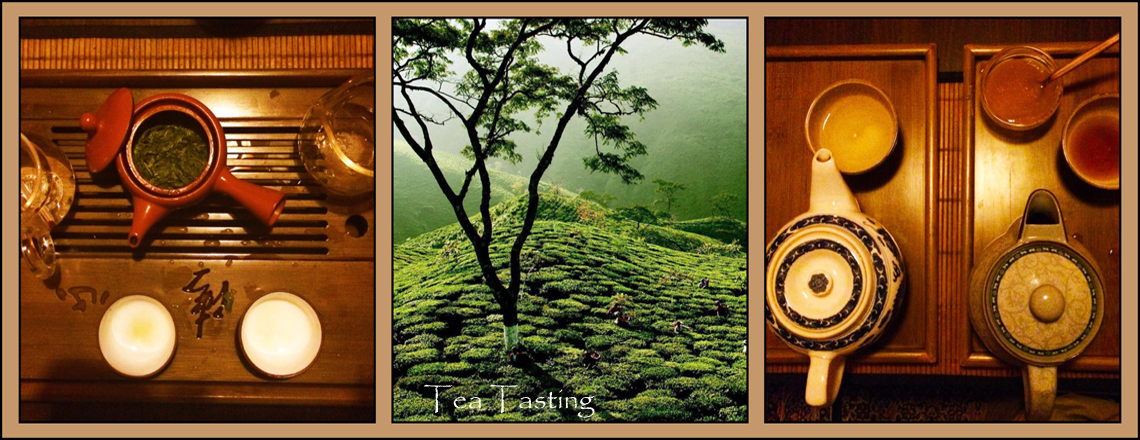tea
Awaken Your Dreams
Tea is the second-most consumed drink in the world, surpassed only by water. All teas (Black, Green, Oolong, White and Pu'erh) come from the same plant. The scientific name of this versatile plant is Camellia sinensis (it's actually related to the lovely camellia flowers seen in botanical gardens and landscapes). Camellia sinensis is a sub-tropical evergreen plant native to Asia but now grown around the world. So, in short, "tea" is anything derived from the Camellia sinensis plant. Anything else, while sometimes called "tea", is more accurately referred to as an herbal tea or tisane. Tisanes include chamomile, rooibos and fruit teas.

White Tea is essentially unprocessed tea.
White tea is the most subtle of all the varieties of tea, using only the newest tea leaves from each bush with a minimal amount of processing. Considered by some connoisseurs to be the height of gourmet tea
Most of the white tea in the world comes from China, but there are regions of India and Sri Lanka that produce it now, too.
White tea production is actually quite simple. The freshly plucked leaves are spread out and allowed to wither until they're completely dry. If the weather isn't cooperating on the day of harvest, sometimes a dryer set at a very, very low temperature is used to help the leaves wither faster. That's pretty much it; there's no twisting, rolling, steaming, etc.The flavor of white tea is described as light, sweet, and delicately floral.
White teas are versatile and forgiving in their preparation. Now, you will hear many different "rules" on how to brew them, but they're much more flexible than that. A good starting point is 75 or 80 degrees for 3-7 minutes (all about personal preference). You could also use hotter water - 90 or so - and steep it for much less time. Cooler water for a longer time will yield sweetness and a soft, delicate quality. Hotter water for a shorter time will make a brighter cup with more body. Also, as most white teas can be very large and fluffy, you should use more leaf - 2+ heaping teaspoons per 225ml of water.
One serving of white tea can be brewed several times, with each steeping revealing another element of flavor. Experiment with these methods to find the perfect cup of white tea to fit your tastes.

Green Tea
Asia is the birthplace of green tea. Green tea is produced primarily in China and Japan, where it is a celebrated beverage. Types of green tea vary significantly, depending on the steps taken during production, such as steaming, pan-firing, rolling, etc. However, it is the application of heat, either by steaming or pan-firing, which prevents the leaves from oxidizing and becoming oolong or black tea. Basically, green tea can be thought of as perfectly cooked vegetables: tender, fresh and full of bright green flavor. The more popular varieties of green tea include Dragonwell (also known as Lung Ching), Genmai Cha, Gyokuro, Gunpowder, Hojicha, Pi Lo Chun and Sencha, just to name a few.
Preparation of your favourite green tea: Try either cooler water (75 degrees ) for 3 minutes, or hotter water (80 degrees) for 1 minute or less. Feel free to adjust to your taste, just keep in mind your main variables are always time and temperature.
The general measuring ratio for green teas is one teaspoon per 225ml cup of water. If the leaves are larger and lighter, you can use slightly heaping scoops.
With so many varieties and styles (and ways to steep them), you're sure to find a green tea that can easily be part of your healthy lifestyle, as well as daily sensory enjoyment. Reward your body and your taste buds!

Yerba Mate
Yerba mate is the national drink of Argentina, Paraguay, and Uruguay.Other South American countries like Bolivia, southern Brazil, and Peru also drink yerba mate. Most yerba mate is grown from three of the more than 280 species of the South American holly tree.
"Yerba" means herb, and "mati," a Quichua tribal word for herb cup, evolved into "mate" to become "Yerba Mate" (MAH-tay), a grassy invigorating brew. The tea is brewed and served in a gourd and it is sipped through a filtered metal straw called a bombilla.
Yerba mate’s health benefits. It is has high in minerals such as calcium, manganese, iron, selenium, potassium, magnesium, phosphorous, and zinc, plus 15 amino acids and antioxidants. Among its most healthful compounds are vitamins A, C, E, B1, B2, B3 (niacin), and B5
for tips and ideas, Join my blog
“blog”


